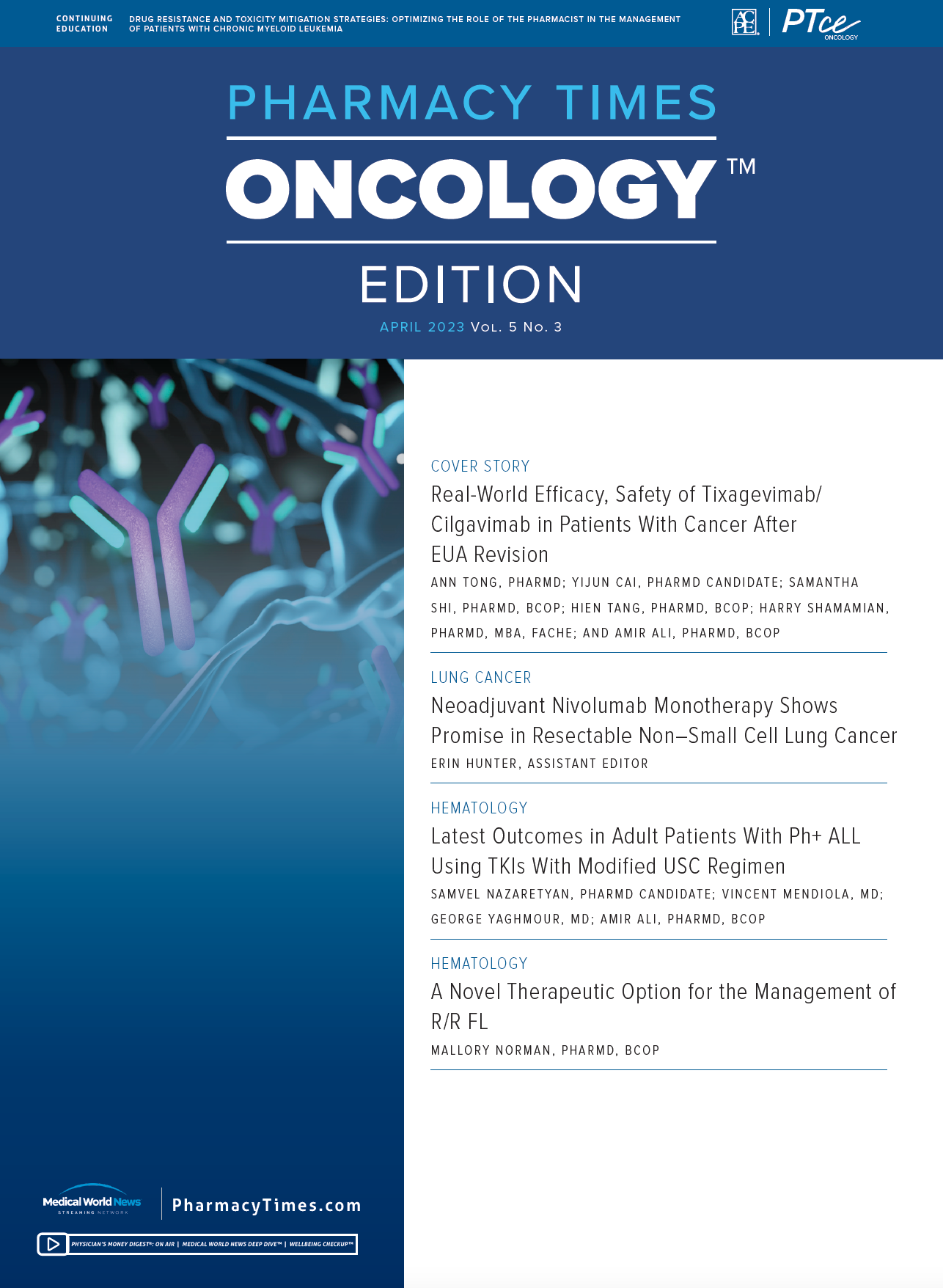Thanks to clustered egularly interspaced short palindromic repeats (CRISPR) technology, patients have been cured of genetic conditions such as sickle cell disease, Kevin Davies, PhD, told the audience at the Association of Community Cancer Centers Annual Meeting & Cancer Center Business Summit, in Washington, DC.1 And that is just the beginning for the gene-editing technology, added the author of 3 books on genetics and executive editor of The CRISPR Journal and GEN Biotechnology.
“CRISPR is truly, almost literally, a cutting-edge technology. The Nobel Prize Committee a few years ago called it ‘the genetic scissors.’ So that’s about as cutting-edge as you get,” Davies said during his presentation. “Just in the past decade, we...[have been able to] usher [CRISPR] into cells, deliver these molecular machines into the nucleus—into the command center of a cell—and then [let it] find its way and weave around all of that DNA that’s coiled and bundled and packaged into 23 pairs of chromosomes, those 6 billion letters of genetic information—the A’s, C’s, T’s, and G’s—to find that 1 letter that is causing a serious genetic disease or potentially triggering a familial form of cancer. That’s what CRISPR can do—and it’s doing it. This isn’t science fiction.”
Pharmacy Times: Call for Papers
Pharmacy Times Oncology EditionTM and Pharmacy Times Health-System EditionTM are seeking to expand our current coverage offerings to include peer reviewed research on clinical topics and treatment of different disease states.
The publications are seeking to focus on a wide range of therapeutic categories in the oncology and health-system pharmacy space to educate readers and translate innovative clinical discoveries into improved health outcomes for patients. This new focus on clinical research seeks to accelerate adaptation of new therapeutics, techniques, and technologies from the publication’s pages to the clinical setting.
The clinical manuscripts sought will examine different treatments for and management of the different disease states and pharmacologic interventions. Of particular interest are papers that highlight the role of the pharmacist within the overall health care team and provide insight into the impact pharmacists have on patient outcomes. These submissions will be peer-reviewed and published in upcoming editions of Pharmacy Times Oncology Edition and Pharmacy Times Health-System Edition.
Some clinical topics of interest include:
- Transitions of Care
- Immuno-oncology
- Hematology
- Breast Cancer
- Lung Cancer
- Leukemia/Lymphoma
- Ovarian Cancer
- Melanoma
- Head and Neck Cancer
- Antimicrobial Stewardship
- Cardiovascular Disease
- Renal Disease
- Metabolic Disease
- 340B
- Biosimilar Adoption
- Immunizations
- HIV and Pre-exposure Prophylaxis
To send in research paper submissions or if you have any questions, please email Davy James ([email protected]) or Alana Hippensteele ([email protected]).
In 2020, Davies said, a paper published in Science presented the results of the first in-human, phase 1 clinical trial using CRISPR-Cas9 gene-editing tech-nology to enhance the natural ability of human T cells to fight cancer,2 noting that the paper concluded that CRISPR can be used as a precision tool to develop chimeric antigen receptor (CAR) T cells.
During the trial, investigators deleted 2 genes encoding the endogenous T-cell receptor (TCR) chains TCRα and TCRβ in T cells to reduce TCR mispairing and enhance the expression of a synthetic, cancer-specific TCR transgene (NY-ESO-1). They also removed a third gene encoding PD-1 to improve anti-tumor immunity. Study results showed immunogenicity to be minimal under these conditions and that CRISPR gene editing for cancer immunotherapy was feasible.1,2
“OK, so that’s good,” Davies said, but “this is even better: A young woman in England named Alyssa [who is aged] 13, maybe 14 years, has received a form of this therapy called ‘base-edited cells’ to treat a very incurable form of T-cell acute lymphoblastic leukemia, and she’s currently at home recovering because this CAR T has worked better than any of her physicians thought it could possibly work.”
Davies also discussed the work of David R. Liu, PhD, and his team at the Broad Institute of MIT and Harvard in Cambridge, Massachusetts, who have developed a new version of CRISPR that, although still involving enzymes, does not use them as scissors but as a delivery system that blunts those scissors and attaches other enzymes to perform “literally DNA surgery, on some of those A’s, C’s, T’s, and G’s to make, in some cases, a single letter change.”
Two postdoctoral investigators at the lab published on 2 types of base editing, Davies said. One is “at a company called Beam Therapeutics, which is commercially developing these technologies. The results, as we just saw with Alyssa, have been demonstrated in preclinical models, and could potentially be on the way to the clinic for a number of different diseases.”
It is currently estimated that some 200 patients have received or are receiving some form of CRISPR gene editing in clinical trials, Davies reported. However, a recent New York Times op-ed by Fyodor Urnov, PhD, a professor of molecular and cell biology at the University of California, Berkeley, and a gene editor at its Innovative Genomics Institute, discussed concerns as to whether CRISPR will reach all the patients who need it.
“All of the patients with literally thousands of known, catalogued genetic diseases could, in principle, be treated more or less today, if we had the infrastructure and the resources and the money to do it,” Davies said. “We are in an arms race, it seems, to develop the world’s most expensive drug. It’s like a badge of honor: Look, our drug was $2.8 million US, or oh no—ours is $3.5 million US.”
For investors, the high cost is great, but not for patients, the vast majority of whom cannot afford therapies for what have become curable diseases.
“The companies will probably justify that by saying yes, but didn’t you know, the actual lifetime cost of managing a [patient with sickle cell disease] who can now live for many, many decades and have a normal healthy life span, could be $5 [million] or $6 million? So you see, we’re saving the health care system money,” Davies said. “I don’t have an answer for that.”
Beyond the obstacles of unaffordability and lack of access, exciting opportunities remain for CRISPR to continue having an impact on medicine and life on the planet. In a recent issue of Science, for instance, authors highlighted a particular investigation into the use of pigs for xenotransplantation. “Pigs turn out to be a fantastic facsimile for humans in terms of organ transplantation. But we have to ensure that their genomes are safe when transported into the human body. So CRISPR is being used by a company called eGenesis, cofounded by Luhan Yang, PhD, and George Church, PhD, to remove all the potentially cancer-causing segments in the pig genome to make them potentially safe for xenotransplantation,” Davies said. “We’ve already seen some reports of this starting to take place.”
References
1. Davies K. Precision medicine: stories from the CRISPR revolution. Presented at: ACCC Annual Meeting & Cancer Center Business Summit; March 9, 2023; Washington, DC.
2. Stadtmauer EA, Fraietta JA, Davis MM, et al. CRISPR-engineered T cells in patients with refractory cancer. Science. 2020;367(6481): eaba7365. doi:10.1126/science.aba7365







